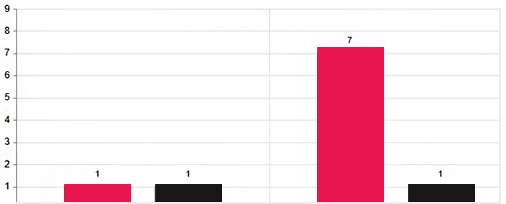Inventory Management Maintaining Tracking System
Project Name: Business Accounting
Client: Company Name Inc.
Project Commencement Date: February 18, 2017
Priject Completion Date: January 25, 2018
Project url: www.example.com
What is an inventory tracking system?
An inventory tracking system is any inventory management software, program, or dashboard that lets you track real-time inventory levels of each stock-keeping unit for better inventory control across your stores. This way, you know how much product is ready to be shipped if a customer ordered an item now, or if you need to send units elsewhere, as well as any back orders for items that are out of stock.
Who uses inventory tracking?
You’ll find most businesses that sell physical goods use some form of inventory tracking including retailers, wholesalers, and even manufacturers. This can range from free tools to very expensive systems (Amazon spent over $220 billion on operating costs in 2018, which includes inventory tracking).
All sellers need inventory tracking to know where their products are and when shipments will arrive. It’s also important in managing inventory turnover, which measures the amount of times inventory is sold then replaced in a designated time period.
THE CHALLENGE
The more inventory you have, the more there is to keep track of
Inventory tracking may not seem like that big of a deal for startups that only handle a few orders per month, but as your small business starts to grow, you’ll run out of space and need help fulfilling orders in a timely manner
Inventory doesn’t sit still
Inventory tracking would be far easier if all your products stayed put in one warehouse and never moved around. But that’s not how a successful ecommerce business works.
It’s time-consuming
As your business grows, inventory tracking, like many inbound and outbound logistics activities, can start to take up more and more time.
THE STRATEGY
Inventory tracking methods and solutions
The best approach to inventory tracking will vary for merchants at different growth stages. Several solutions exist today that help you understand where your product is, the exact stock levels at each location, and where it’s heading next.
Card system
Card systems are one of the older methods of inventory tracking that consisted of manually writing down every transaction from the point of sale on what was known as a cardex. Of course, this process is prone to human error and is also very time-consuming. Card systems have fallen out of use in favor of faster and more accurate methods that use modern technology.
Spreadsheets
Spreadsheets are the easiest option for low volume inventory tracking if you’re only dealing with a few products that all reside in the same place. You can add all SKUs and then create columns for the quantity and other varying details that might be unique to your business such as bin number or room. However, many merchants quickly outgrow spreadsheets and move on to more accurate and dynamic inventory tracking methods.
Conclusion
Successful inventory tracking does not come without its challenges, but having the right tools in place can help you scale and save money. ShipBob is a great solution for fast-growing online brands that need to scale their ecommerce shipping and logistics.
The data speaks for itself. FastShip customers have experienced:
- 70% reduction in US shipping costs
- 97% increase in average order value (AOV)
- 120 hours per week saved
Want to learn more about FastShip’s fulfillment services and inventory tracking capabilities? Request more information below.
THE CHALLENGE
A summary of FastShip inventory data spread chart after successful planning and implementation of our inventory model.

CLIENT’S TESTIMONIALS



Benjamin Tickle is the Director of Content at FastShip, where he drives the content marketing strategy and writes various articles, case studies, and white papers to help ecommerce merchants grow their business.
Benjamin Tickle, Project Manager
Company Name Inc




